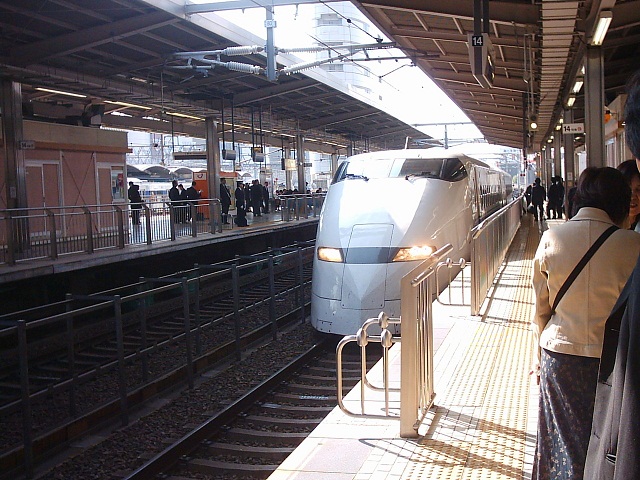Although its speed becomes one of the main reasons why the Shinkansen is amazing, its punctuality on arrival and departure, its comfort and safety of the trips are fantastic. The punctuality can be seen from the fact that the trains are almost never late. The yearly average delay time per train is 30 seconds. To keep the comfort for passengers, the trains are well maintained so that they can run smoothly, and also the cars are kept very clean. As for the safety, the fact says that in its 50 years of operation, there has never been accident-related death.
Again, what are the secrets?
Secret #1: The railroad engineer is very highly skilled
In one year, 120,000 trains will run on the Tokaido Shinkansen tracks. On peak days, more than 400 trains run everyday, which means 1 train will be available for every 3 minutes. As the railway platforms are limited in number, it is imperative that the Shinkansen arrives and departs on time so that they can carry as many passengers as possible. The Shinkansen punctuality is indeed in the hand of the railroad engineer. Below are what the engineer does in operating the trains:
a. The calculation of speed is highly-accurate
The railroad engineer is constantly calculating the speed the train needs to run at in order to get to the next station precisely as scheduled. When the train pulls in and out of station, the railroad engineer announces how late or fast the train was in seconds, and confirms the exact time using a pocket watch. The railroad engineer also calculates how long it will take to the next station even if the train will not stop. If the train is going faster or slower than expected when it arrives on a station, the railroad engineer will set the new speed required. This way, the time gap between the arrival times at every station will always be corrected.
b. Unexpected incidents are simulated
When the Shinkansen runs, any breakdowns might happen but they should not change the schedule. Thus, the railroad engineer has to deal with the breakdown while driving. To anticipate breakdowns, the railroad engineer practices regularly with a simulator. The simulator creates scenarios where various breakdowns occur.
Secret #2: The cleaning staff are exceptional
When the Shinkansen reaches the last station on its route, there are ten minutes excluding the passengers getting off and on, before it turns around and departs for the next destination. The cleaning staff should put the 10 minutes into good use and prepare the cabin of the train cars for the next passengers.
Secret #3. The safety check system is reliable
So far, there has never been any accident-related death. The safety of the Shinkansen is supported by a series of routine detailed checks.
a. Four-tier frame inspection
There is a 4-tier inspection system conducted for the Shinkansen. Once every two days, an inspector check any defects both by visual and by touch. Once a month, the Shinkansen undergoes a complete inspection. The power is turned on to check if the train is running as it should be. The door system is among those given the highest priority. If a door fails to open or to shut, it will slow the passengers in getting on and off the train, resulting in delay on the schedule. One train (with 16 cars each) is inspected more than 500 times for every 3 years.
b. Tracks inspection
To check the tracks, they have Dr. Yellow, a special train running on the track being inspected at the speed of 270 km/hr. Among those inspected are tracks condition, aerial wirings, and railroad signaling.
c. Ballasts replacement
As the Shinkansen runs very fast, the ballasts should be replaced every day to maintain the safety. The ballasts replacement machine was invented in Japan and is the first of its kind in the world.
No wonder Japanese trains are "never" late.
***
via tsunagujapan, wikipedia
Photo: Freeimages.com/Mdmartian
Bagikan
Why Japanese Trains Are Never Late
4/
5
Oleh
Unknown





